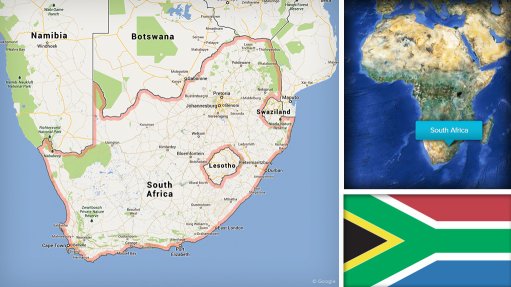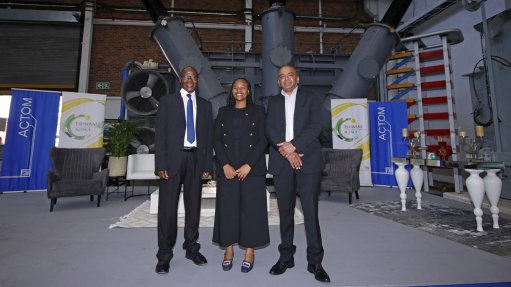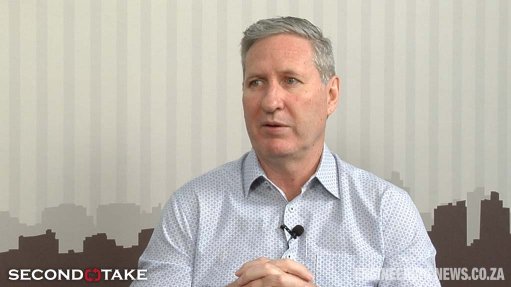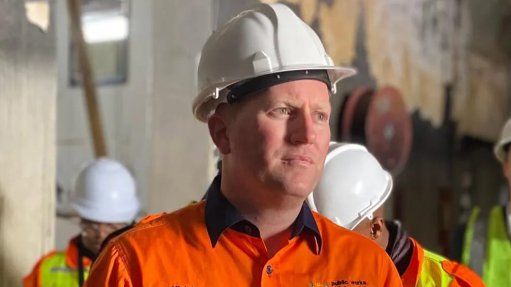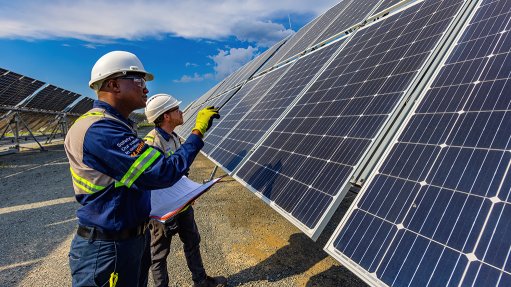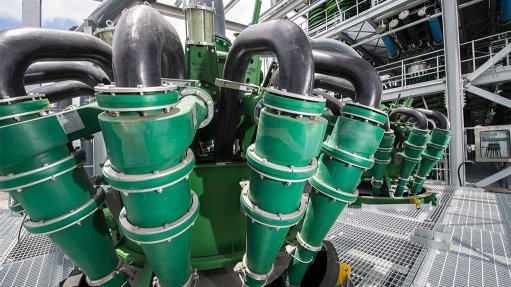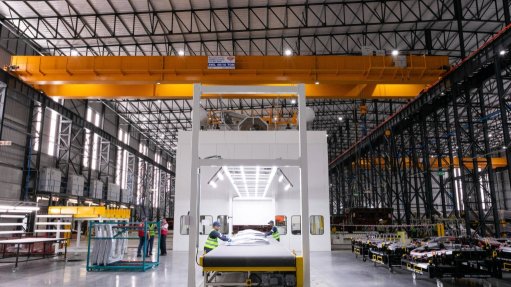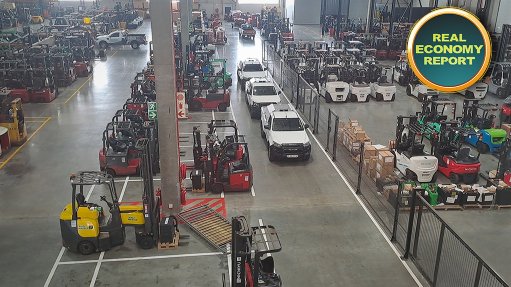LSF confident in building economic case for VRFB manufacturing in South Africa
After commissioning energy consultancy Customised Energy Solutions (CES) to determine the potential for a commercial vanadium redox flow battery (VRFB) value chain in South Africa, the Localisation Support Fund (LSF) is confident that this technology offers significant advantages and can cater for long-duration energy storage (LDES) demand.
South Africa holds vast vanadium resources with many deposits grading more than 1.5% vanadium pentoxide, which is considered high-grade by international standards.
The study set out to identify areas where South Africa can enhance its competitive positioning in the VRFB sector. CES also undertook technology benchmarking to determine the benefits and challenges related to VRFBs.
CES industry research manager Avanthika Satheesh predicts that global installed VRFB capacity will increase tenfold from 4 GWh to 40 GWh by 2030, with notable installation acceleration predicted from 2027 onwards. This presents a substantial opportunity for South Africa to advance its primary vanadium mining, refining and downstream processing capabilities.
The world currently derives most of its vanadium supply from iron-ore mining and processing, with vanadium being produced as a byproduct. China is a leading slag-based vanadium producer in this regard, producing two-thirds of the average 100 000 t/y global supply.
The share of vanadium being used for VRFB’s is currently 5%, but CES estimates this will increase to 27% by 2030, which would require the doubling of global vanadium production.
Satheesh explains that VRFBs are uniquely suitable for LDES applications and, as renewable-energy deployment accelerates, storage systems capable of stabilising grids and storing excess energy for extended periods are becoming increasingly essential.
VRFBs have an exceptionally long life of between 10 000 and 20 000 cycles, operational lifespans of between 25 and 30 years, with no degradation even at 100% capacity.
The technology is also inherently safe and thermally stable, using a non-flammable electrolyte that can operate across wide temperature ranges.
Satheesh points out a major advantage of VRFBs is recyclability. The vanadium electrolyte itself is nearly 100% recoverable, which supports circular business models and long-term cost stability.
However, the high capital expenditure associated with VRFBs is the most inhibiting factor to scaling production. CES predicts capital expenditure to produce VRFBs will decline from $380/kWh this year to $230/kWh by 2030. This is similar to the cost of lithium-iron-phosphate batteries for applications exceeding eight hours of storage.
CES affirms that VRFB manufacturers are hard at work on cost reduction strategies, including by improving the efficiency of cells. In fact, the consultancy projects that VRFBs will reach levelised cost of storage parity with lithium-ion batteries by 2030.
LSF CEO Irshaad Kathrada believes South Africa can develop a globally competitive downstream vanadium industry, owing to its significant reserves of high-grade vanadium, the applicability of VRFB technology for domestic and regional storage applications and the country’s recent policy alignment on critical minerals – which includes vanadium.
He cautions that the global VRFB value chain is highly concentrated, with the top eight vanadium electrolyte manufacturers based in China and accounting for 93% to 95% of global capacity. This concentration presents opportunities and risks that ultimately call for regional diversification to mitigate supply chain vulnerabilities globally.
For South Africa to be established as a VRFB leader, not only a primary production leader, a more targeted and multi-layered policy framework is needed that promotes local manufacturing, stimulates domestic demand and improves export competitiveness.
LSF recommends the establishment of energy storage special economic zones dedicated to battery technology production, along with tax incentives, grants and preferential procurement for locally produced VRFB components.
Kathrada is confident that energy storage will increasingly form a large part of the green industry opportunity and says countries that build capacity early will define the next wave of clean energy manufacturing.
“To unlock the vanadium opportunity, we must make the business and economic case work strongly. If we do not move decisively, we risk seeing this value migrate to other global players who are acting faster,” he states.
Kathrada cites the example of China, India, Australia and the US having provided government support for research and development on VRFBs or production-linked incentives in some instances.
During a panel discussion hosted by LSF to discuss the CES’s findings, consultancy Hatch senior process engineer Sudhir Thakurdin pointed out how the recyclability of VRFBs lowers the total cost of the technology compared with others, given its benefits in respect of carbon emission reduction and other climate change goals, which boosts competitiveness in the energy landscape.
Electricity and Energy Deputy Minister Samantha Graham-Maré said the South African Renewable Energy Masterplan sets out a clear roadmap for how localisation in the renewable energy and storage value chains can drive industrial growth and energy security.
“Vanadium beneficiation and VRFB manufacturing align squarely with this vision, offering an opportunity to convert our mineral wealth into sustainable jobs, exports and technological capability,” she notes.
Graham-Maré highlighted that some of the country’s vanadium reserves are located in Mpumalanga, which can help advance the just energy transition given this province’s coal-based economy that will need shifting.
With global demand for LDES rising sharply and vanadium being recognised as a critical mineral, South Africa has the rationale and policy foundation to act.
LSF concluded that a deliberate, coordinated push to support beneficiation, refining and manufacturing can anchor the country within global VRFB supply chains, while capturing meaningful value from the global energy transition and strengthening its own industrial base.
Article Enquiry
Email Article
Save Article
Feedback
To advertise email advertising@creamermedia.co.za or click here
Comments
Press Office
Announcements
What's On
Subscribe to improve your user experience...
Option 1 (equivalent of R125 a month):
Receive a weekly copy of Creamer Media's Engineering News & Mining Weekly magazine
(print copy for those in South Africa and e-magazine for those outside of South Africa)
Receive daily email newsletters
Access to full search results
Access archive of magazine back copies
Access to Projects in Progress
Access to ONE Research Report of your choice in PDF format
Option 2 (equivalent of R375 a month):
All benefits from Option 1
PLUS
Access to Creamer Media's Research Channel Africa for ALL Research Reports, in PDF format, on various industrial and mining sectors
including Electricity; Water; Energy Transition; Hydrogen; Roads, Rail and Ports; Coal; Gold; Platinum; Battery Metals; etc.
Already a subscriber?
Forgotten your password?
Receive weekly copy of Creamer Media's Engineering News & Mining Weekly magazine (print copy for those in South Africa and e-magazine for those outside of South Africa)
➕
Recieve daily email newsletters
➕
Access to full search results
➕
Access archive of magazine back copies
➕
Access to Projects in Progress
➕
Access to ONE Research Report of your choice in PDF format
RESEARCH CHANNEL AFRICA
R4500 (equivalent of R375 a month)
SUBSCRIBEAll benefits from Option 1
➕
Access to Creamer Media's Research Channel Africa for ALL Research Reports on various industrial and mining sectors, in PDF format, including on:
Electricity
➕
Water
➕
Energy Transition
➕
Hydrogen
➕
Roads, Rail and Ports
➕
Coal
➕
Gold
➕
Platinum
➕
Battery Metals
➕
etc.
Receive all benefits from Option 1 or Option 2 delivered to numerous people at your company
➕
Multiple User names and Passwords for simultaneous log-ins
➕
Intranet integration access to all in your organisation









